Grit is an important part of a chicken's diet.
It helps chickens digest their food, break down proteins, and stay healthy. Lack of grit or insufficient grit can cause many problems for your birds, including poor feed conversion, discomfort, reduced laying capacity, and poor health.
But what is grit? When should you start offering grit to your chickens, and what kind of grit is best for different ages of chickens? If you're not sure, I'm here to help!

As an Amazon Associate I earn from qualifying purchases.
Jump to:
What Is Chicken Grit?
Grit is a catch-all term for a supplement made up of small stones, large sand grains, and even oyster shells that are fed to chickens on purpose! When your chickens eat grit, it stops along the digestive system in the gizzard.
While grit doesn't directly contain nutrients, its presence makes digestion and nutrient absorption possible for your chickens. It may seem counterintuitive, but this is due to the way a chicken's digestive system performs.
Chickens do not have teeth to masticate (chew) their food, so they rely on what's called a gizzard to do their chewing for them! When a chicken eats, it first travels into its crop for storage.
Once the crop is full, the food travels to another organ that secretes gastric juices and digestive enzymes to help begin the breakdown process. From there, the food travels to the gizzard.
The gizzard is a muscular organ that contracts and relaxes and during that process, it mechanically masticates and grinds up the foods your chicken has eaten to aid in the digestive process. This is where the grit comes in!
A gizzard with sufficient amounts of grit will grind up food much more easily and effectively than one with insufficient grit.
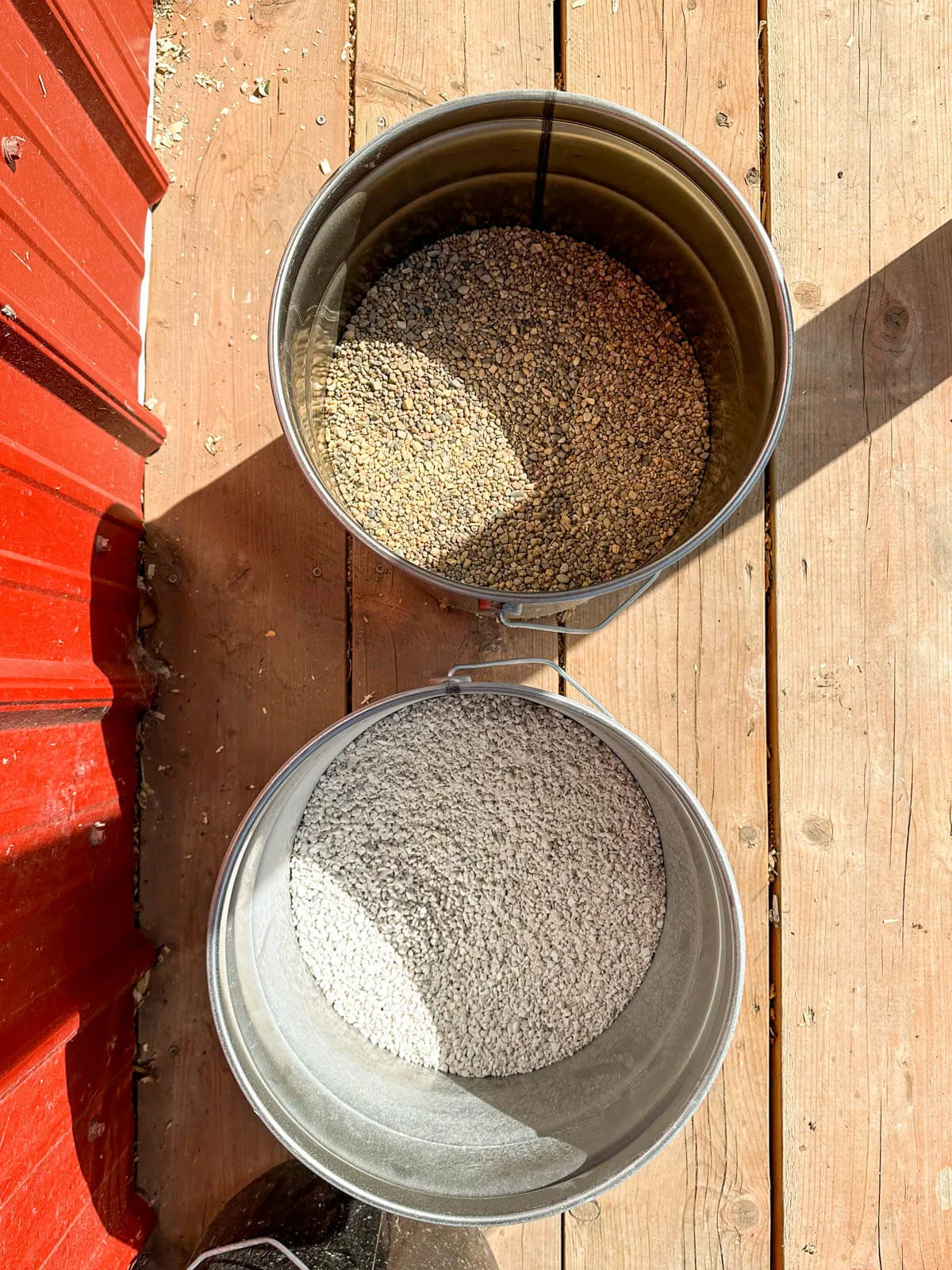
Types Of Grit
Soluble:
Oyster shells can be considered soluble grit. Although they are often fed for different reasons, oyster shells make effective grit.
Over time, due to the masticating action of the gizzard, they are completely broken down, but they function much the same as insoluble grit until then.
Although commercial laying rations often include calcium, we've never found it to be enough to ensure our hens maintain strong bones and high-quality egg shells.
In the past, all our eggshells were fed back to our laying hens in a closed-loop system but as we accumulated more chickens (ahem, chicken math) and began to sell eggs, I noticed a decline in the shell quality, we began to supplement with oyster shell grit as well as grit.
It surprised me that as soon as the oyster shell dispenser went into the chicken run, our grit consumption went way down. Looking back now, I can see that their bodies were using the oyster shell as a calcium carbonate supplement and a grit supplement.
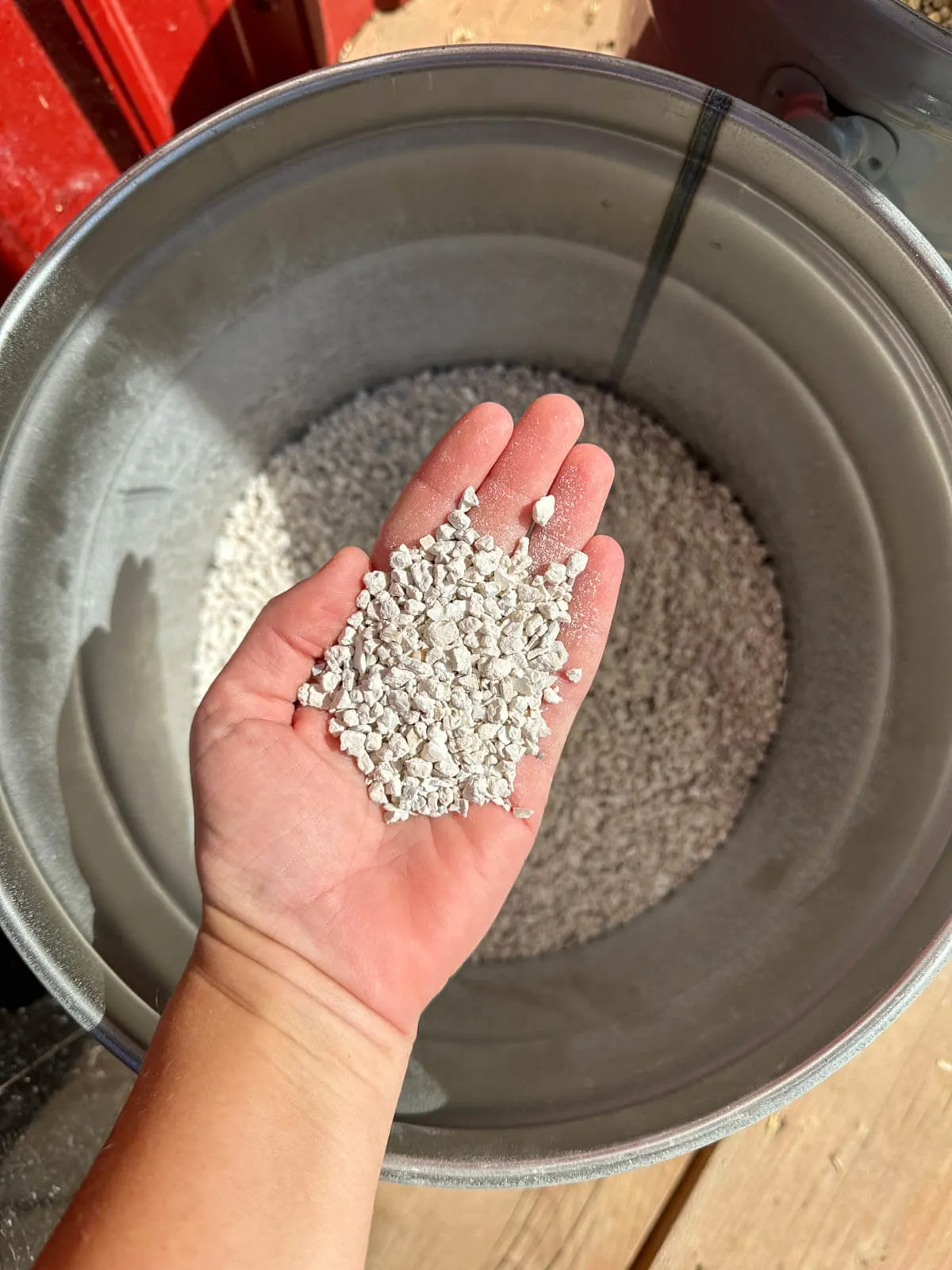
Insoluble:
Insoluble grit is often made of granite or flint or in our case, silica. Here in Alberta, we are lucky enough to purchase grit sourced and manufactured right here in our home province.
When shopping for insoluble flint grit, make sure to read the package - look for something that is sub round to sub angular and well sorted, the University of Saskatchewan has a great descriptor on these terms, but the short version is that you want something that's not sharp but also not round and somewhat similar in size.
Sharp rocks may injure your birds while perfectly rounded grit won't provide the masticating, pulverizing action necessary to effectively break down food.

Different Grit For Different Stages
Feeling like you've got a handle on grit? Just wait, there's more!
There are different sizes of grit for your chickens' developmental stages.
When your chicks are small, they should be offered chick grit. This is a very fine, uniform blend of insoluble grit particles that are about the size of a large grain of sand. As the chicks grow, the grit size should grow with them. Many brands offer grower grit in addition to poultry grit.
It would be unwise to offer chicks grit that is too large and hens grit that is too small.
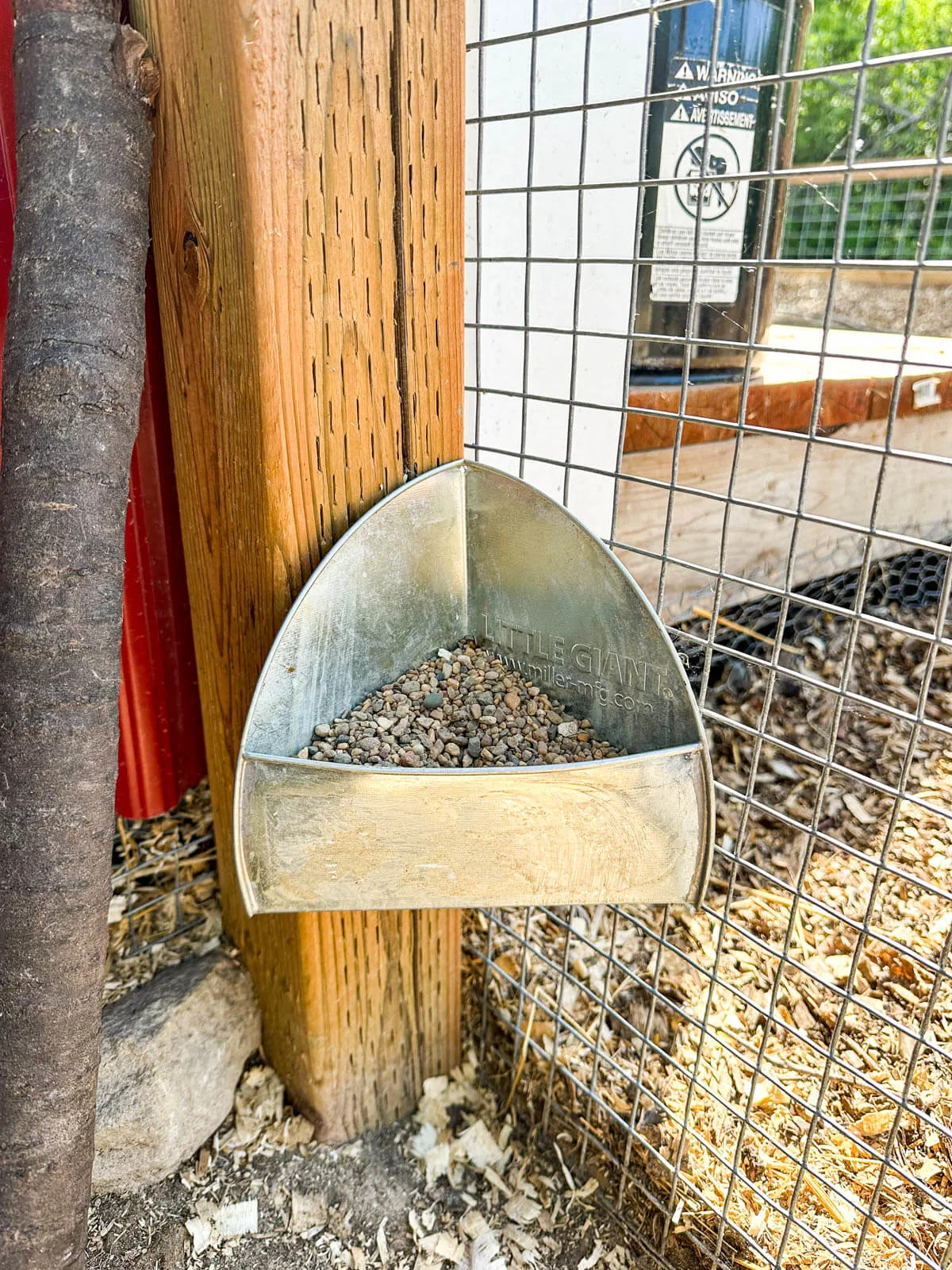
When To Offer Grit
When brooding chicks, it's not required to offer grit until they are given treats. Commercial chick starter does not need grit to be dissolved, so they are fine without it. Once you begin treating your baby chicks to picked dandelion greens, clumps of grass, kitchen scraps, and other yummy treats, they will require grit.
Generally speaking, chickens fed ONLY commercial layer pellets do not require grit as the ration is specifically designed to be broken down by the bird's saliva and gastric juices. This usually only applies to chickens in poultry houses that aren't exposed to chicken runs and other foods.
Free range chickens can absolutely benefit from grit as well, especially if your area has dense clay soil, lacks abundant small rocks and pebbles, or is well covered in grass and plant matter. While free rangers can often find what they need, not all land can abundantly provide all resources.
If you're not sure if your birds are getting enough grit, it doesn't hurt to offer!
More Chicken Content To Peck Out!
How To Offer Grit
Offering grit is super easy. Place it into a small dispenser and let the flock do their thing. You don't technically feed chickens grit, you offer it and they will take it free choice.
Chickens are smarter than we give them credit for, they know their bodies, and what their bodies need! Each bird will take as much or as little grit as it needs to function optimally.
The hardest thing about offering grit is to make sure that both types, soluble and insoluble, are available at all times, for me, that amounts to a glance into the dispenser every few days and a top-up whenever they're low.
Avoid adding grit directly to their food - it can cause calcium overload in some hens and deficiency in others, or a gizzard full of grit with no room for food.
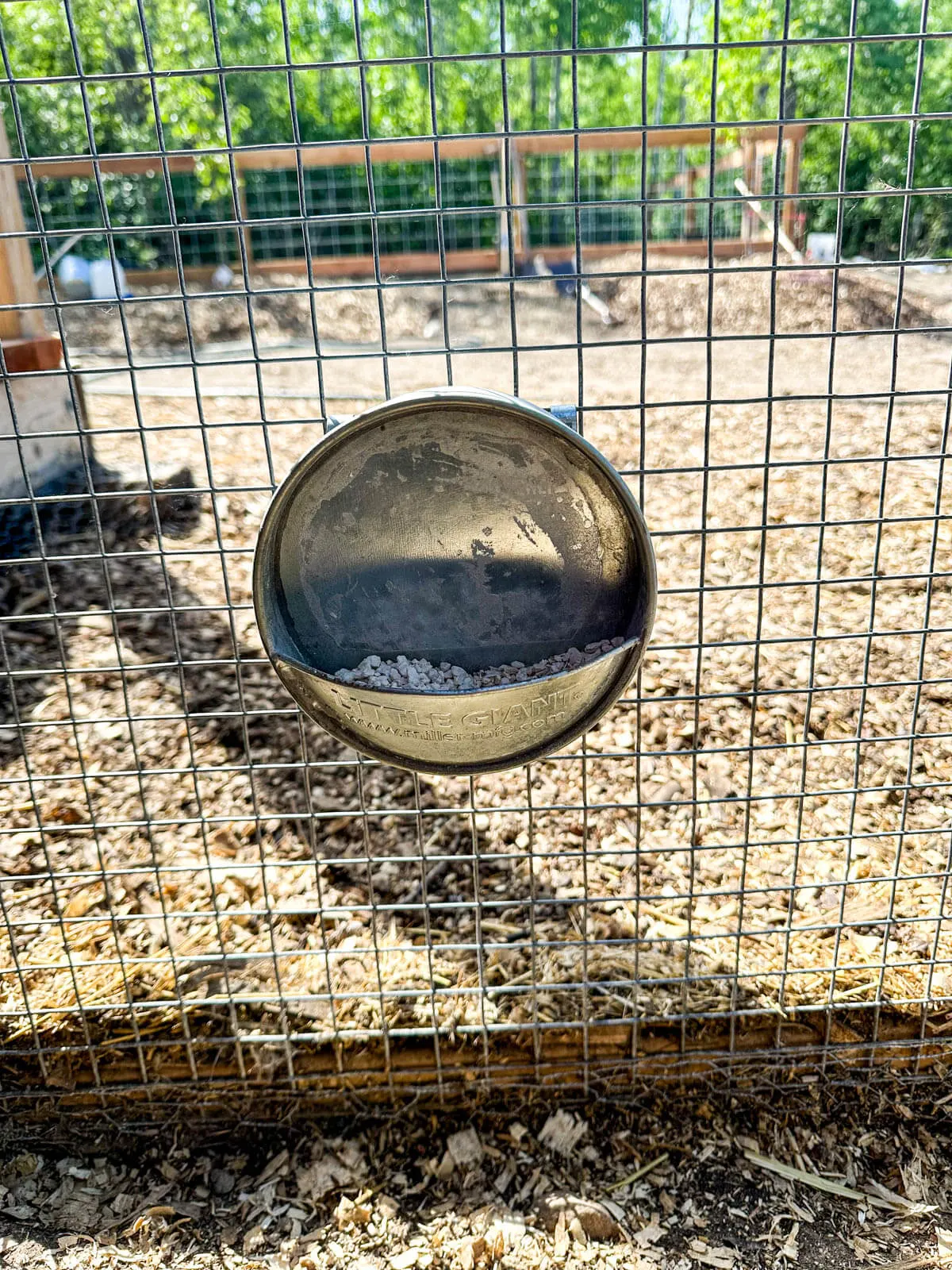
My System For Offering Grit
Our beautiful chicken coop has a covered front porch and we place metal buckets on the porch filled with grit, oyster shells, and scratch. This keeps them in an easily accessible place and prevents me from having to trudge back to the garage cause I forgot to bring out some grit!
Keeping the supplies needed close at hand and refilling the buckets as required makes offering grit a breeze.
We currently have a corner hanging waterer that I use for insoluble silica grit - I chose this one because it has a wider opening for my roosters to get their combs into! I use a round hanging waterer for my oyster shells to keep the containers different.

FAQ
If your chickens only eat commercial chicken feed, they probably don't need grit, but offering it shouldn't hurt either. Egg layers should be at the very least offered calcium supplementation in the form of oyster shells.
No, keep the food and grit separate. Have a small dispenser for both oyster shells and grit and keep it filled at all times. This allows the chickens to take what they need and reduces the likelihood of dosing problems.
Chicks, juvenile chickens, and roosters do not lay eggs and do not require supplementation with oyster shell - even if it is offered, they are unlikely to take it.
This depends on your land, but my philosophy is "it can't hurt!", so I would recommend offering grit, they may surprise you.
Pin This Guide To Grit!





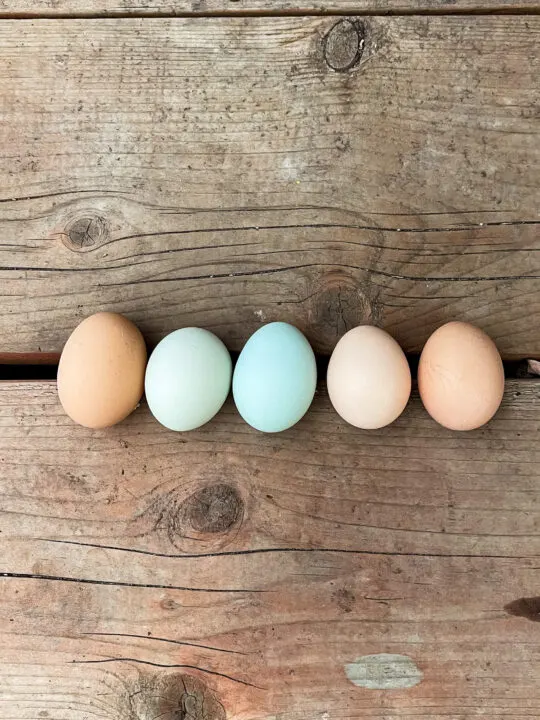
Kyle
Monday 3rd of July 2023
This is such an informative article. I am embarrassed to say that I didn't know this information when starting my little flock... luckily everyone survived!!!
Ally
Tuesday 11th of July 2023
There's a lot to know when it comes to keeping chickens, don't feel bad!